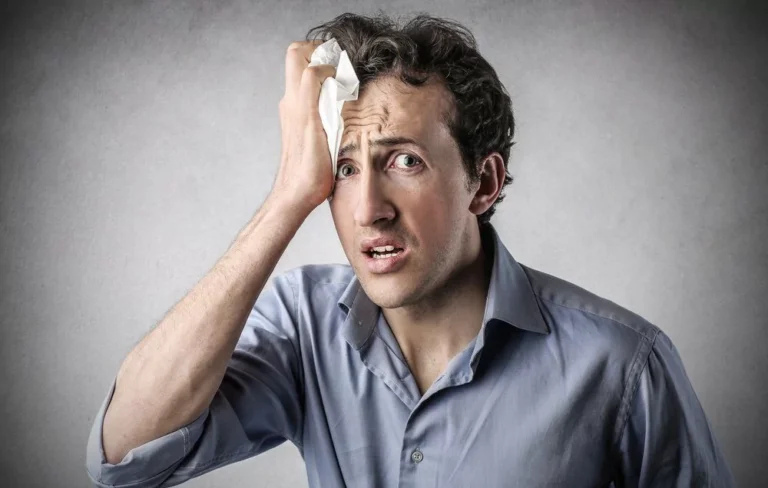Perspiration or sweating is the body’s way to deal with the heat generated from exercise or heat in the environment. As water evaporates on the surface of the skin, heat is lost to the environment. Body water is routinely lost via perspiration and by the humidification of the air that enters and leaves the lungs. Some water is lost in the voiding of wastes via the urine and feces as well. The average adult looses about 0.7 L of sweat/day but sweat losses can be as much as 2.5 L per hour. Hot, dry climates, exercise, and fever increase water losses from the skin and lungs. Diarrhea can result in very large water losses.
Water must be replaced to maintain fluid balance. Water imbalances of only 1-2% can lead to illness or even death. No minimum daily requirement for water has been established, although a general guideline is set at eight glasses of water per day. People who engage in strenuous exercise or work outside in hot climates, have a fever, vomiting, diarrhea, or excessive urine losses, those on high protein diets or taking diuretics have increased fluid needs.
Sweat Glands
Sweat glands are simple coiled glands found in the skin in two forms. Most sweat glands are eccrine glands, producing the secretion without destruction of the cells of the glands. Sweat glands are most numerous on the palms and soles of the feet.
Those glands in the armpit, areola, labia majora and anal region are apocrine glands. Apocrine secretions are those where the apical region of the secreting cells is lost with the secretion. This type of sweat contains protein and carbohydrates that when acted upon by bacteria on the skin take on an odor. Apocrine sweat glands empty into hair follicles while eccrine glands open at the skin surface.
All eccrine glands do not function all the time but they respond quickly to heat stress. Eccrine sweat is an ultrafiltrate plasma forming a colorless, hypotonic solution that is 99% water and 1% solutes including sodium, chloride, potassium, calcium, urea, ammonia, uric acid and phosphorus. Aldosterone increases the reabsorption of sodium from sweat.
Regulatory heat exchange is accomplished by the action of the eccrine sweat glands and the cutaneous blood vessel network. As the liquid sweat evaporates and cools the skin the cutaneous blood vessels dilate or constrict to remove or conserve heat. A central nervous system thermostat in the hypothalamus regulates the function of the eccrine glands and the cutaneous vasculature. Perspiration is controlled by sympathetic nervous system (cholinergic) fibers that innnervate the sweat glands. Heat is the primary stimulus to the eccrine glands but other stimuli such as nervousness or eating spicy foods can cause sweating.
Sweat Deficiency (hypohidrosis)
Seen in diarrhea, vomiting, polyuria, hemorrhage, diabetes insipidus, myxedema, icthyosis, and in increased body temperature (heatstroke).
Heatstroke is characterized by high body temperatures, lack of sweating, headache, numbness, confusion, rapid pulse and respiratory rate, and elevated blood pressure. It represents an acute and dangerous threat to the life of the person. Immediate therapy is necessary. The person must be cooled down by the use of an ice bath or evaporative cooling and should monitored by health professionals for several days.
Excessive Sweating (diaphoresis, hyperhidrosis)
Seen in rheumatic fever, relapsing fevers such as malaria, septic fevers, tuberculosis, hyperthyroidism, and migraine. Hands and feet will also sweat excessively in emotional situations such as nervous agitation, hysteria, or fright.
Heat exhaustion is caused by the loss of fluids and sodium chloride in excessive sweating due to exposure to heat. Symptoms include weakness, dizziness, nausea, headache, and collapse. Treatment should include shading the person and replacement of electrolytes by taking salt tablets, drinking fruit juices or sports drinks.
Deodorants & Antiperspirants
A deodorant is an agent that covers or absorbs foul odors without limiting perspiration. A dilute solution of formaldehyde has been used as a prescription deodorant for hyperhidrosis of the palms and feet. Substances that inhibit perspiration either by reducing pore size or by clogging pores to retard perspiration are antiperspirants. Aluminum chlorohydrate (or derivatives thereof) is the most common compound used in antiperspirants and deodorants. Cyclodextrins, baking soda or talc may be included to absorb moisture and odor. Antioxidants, anticholinergics and some extracts of herbal medicines are under investigation as active ingredients.
Caution: Deodorants and antiperspirants may contain antibiotics and preservatives that can cause irritation. Other ingredients that can photosensitize may also be present. Avoid applying them to broken or irritated skin.

